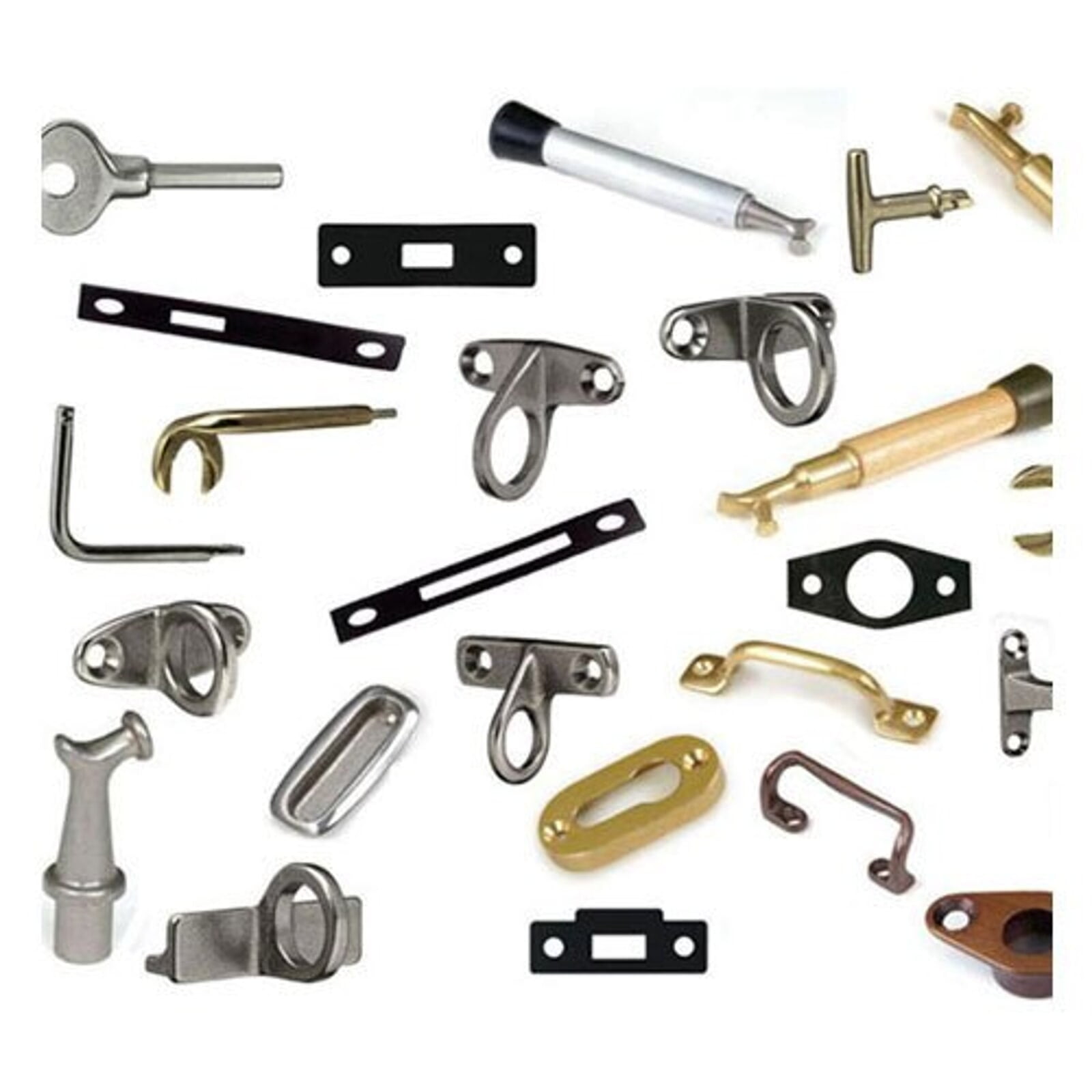Introduction
When it comes to selecting the right door hardware and fittings, the choices can be overwhelming. These components not only affect the functionality and security of doors but also play a crucial role in the overall aesthetic of a space. Whether you’re outfitting a residential home, a commercial building, or a renovation project, understanding the different types of door hardware and fittings available can help you make informed decisions that enhance both performance and design. This blog explores the various types of door hardware and fittings, their functions, and their applications.

1. Door Handles and Knobs
Door handles and knobs are fundamental elements of door hardware. They come in various styles and functions, and choosing the right type is essential for both usability and aesthetics.
Types of Door Handles:
Lever Handles: Popular for both residential and commercial doors, lever handles offer ease of use, especially for people with limited hand strength. They come in various designs, including straight, curved, and backplate styles.
Pull Handles: These are used primarily for commercial doors or doors that don’t require locking. Pull handles are mounted on the surface of the door and are available in various lengths and finishes.
Types of Door Knobs:
Round Knobs: The most common type of door knob, round knobs are simple and effective. They come in various finishes and styles and are typically used in residential settings.
Square Knobs: Offering a modern, contemporary look, square knobs are becoming increasingly popular. They provide a geometric aesthetic and are often used in minimalist or modern interiors.
2. Door Locks
Door locks are crucial for security and come in different types, each suited to various needs and levels of security.
Types of Door Locks:
Deadbolts: Known for their high security, deadbolts are often used in exterior doors. They operate with a key or thumb turn and provide strong resistance against forced entry.
Knob Locks: Common in residential settings, knob locks integrate a latch and a lock within the door knob itself. They are suitable for interior doors and can be equipped with a keyed cylinder for additional security.
Lever Handle Locks: Similar to knob locks but with a lever handle, these locks are often used in commercial settings for ease of use. They can be combined with deadbolts for enhanced security.
Electronic Locks: These modern locks use keypads, biometrics, or RFID technology to grant access. They offer convenience and high security without the need for physical keys.
3. Door Hinges
Door hinges are essential for allowing a door to swing open and closed. The choice of hinge affects both the door’s functionality and its durability.
Types of Door Hinges:
Butt Hinges: The most common type of hinge, butt hinges are mounted on the edge of the door and the frame. They are available in various sizes and finishes and are suitable for most residential and commercial doors.
Continuous Hinges: Also known as piano hinges, these run the full length of the door. They provide uniform support and are often used in high-traffic or heavy-use doors.
Concealed Hinges: These hinges are hidden when the door is closed, offering a clean, modern look. They are often used in cabinetry and contemporary door designs.
Spring Hinges: Designed to automatically close the door after opening, spring hinges are useful in both residential and commercial settings, particularly for doors that need to self-close.
4. Door Closers
Door closers are mechanisms that ensure doors close automatically after being opened. They are essential for maintaining security and energy efficiency.
Types of Door Closers:
Hydraulic Door Closers: These use hydraulic fluid to control the speed and force with which a door closes. They offer adjustable closing speeds and are suitable for a wide range of door types.
Pneumatic Door Closers: Utilizing air pressure to close the door, pneumatic closers are often found in lighter-weight doors and are known for their smooth operation.
Surface-Mounted Door Closers: These are mounted on the door frame and are visible. They are commonly used in commercial settings and offer ease of installation and adjustment.
Concealed Door Closers: Installed within the door or frame, these offer a sleek, unobtrusive look and are often used in high-end residential and commercial projects.
5. Door Stops and Buffers
Door stops and buffers protect doors and walls from damage by preventing doors from swinging too far.
Types of Door Stops and Buffers:
Wall-Mounted Door Stops: Installed on the wall, these prevent the door from hitting the wall. They are available in various designs and materials to match different interiors.
Floor-Mounted Door Stops: Fixed to the floor, these stops are used to protect the door and adjacent surfaces from damage. They are suitable for high-traffic areas where wall-mounted stops might not be practical.
Hinge Pin Door Stops: Attached to the door hinge, these stops provide a simple solution for limiting door swing and are often used in residential applications.
6. Door Bolts
Door bolts add an extra layer of security, particularly for exterior doors.
Types of Door Bolts:
Surface Bolts: These are mounted on the surface of the door or frame and are often used for securing doors from the inside. They are easy to install and adjust.
Mortise Bolts: Installed within the door and frame, mortise bolts offer a more discreet and secure locking mechanism, commonly used in high-security applications.
Flush Bolts: Used in pairs, flush bolts are recessed into the door or frame and are often employed in double doors. They provide a secure lock when one door is fixed and the other is operable.
7. Door Hardware Accessories
Door hardware accessories enhance the functionality and appearance of doors.
Examples of Accessories:
Kick Plates: These are protective plates installed at the bottom of the door to prevent damage from scuffs and knocks. They are commonly used in commercial environments.
Push/Pull Plates: Mounted on the surface of doors, these plates facilitate easy operation and are often found in commercial or high-traffic areas.
Letter Plates and Viewers: These accessories are used in residential doors for mail slots or to allow people to see who is at the door without opening it.
Conclusion
Choosing the right door hardware and fittings is essential for achieving both functionality and style in any building. From handles and locks to hinges and closers, each component plays a crucial role in the overall performance and appearance of doors. Understanding the different types of door hardware and their applications can help you make informed decisions that enhance security, durability, and aesthetic appeal.
Whether you are designing a new space or renovating an existing one, consider your specific needs and preferences when selecting door hardware. With the right components, you can ensure that your doors not only look great but also function effectively and stand the test of time.






